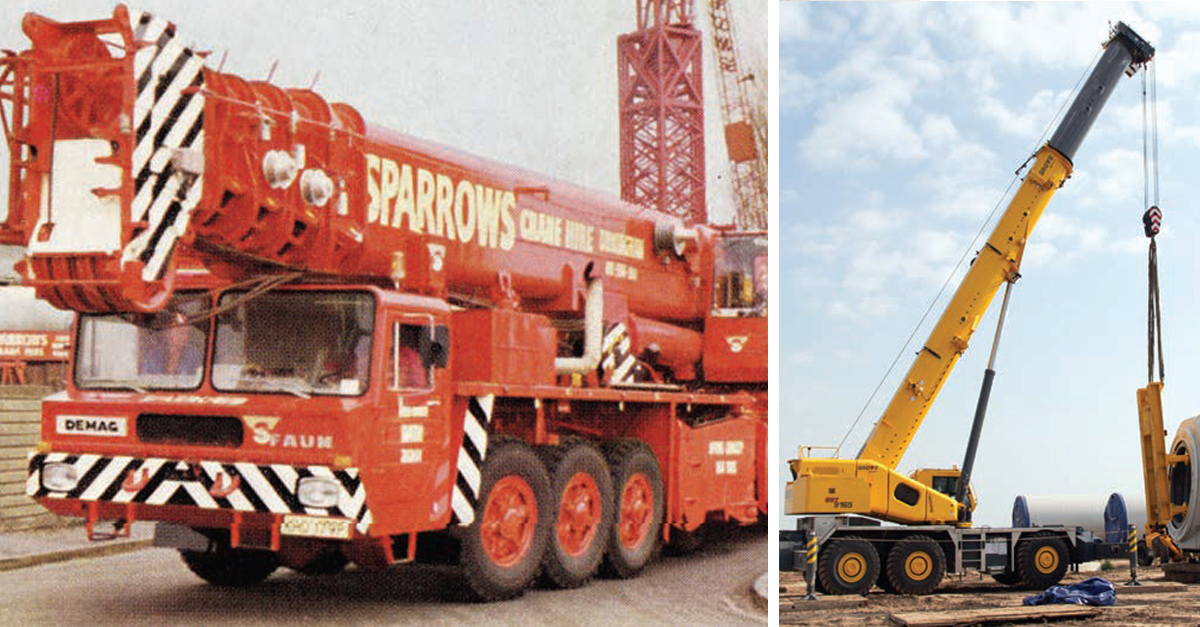
Last month Cranes Today Magazine published an in-depth article about the evolution of modern mobile and tower cranes during the 20th century and touched on their continued development to date in the 21st century. Based in the UK, Cranes Today was originally called Cranes and first published in 1966. It has served as a resource for news, trends, and other information for the crane industry. In 1972 the publication became known as Cranes Today.
Cranes for hire
The American crane hire (rental) industry got its start back in the 1930s. Original steam powered cranes gave way around 1900 to petrol (gasoline) and diesel-powered truck crane models that were self-propelled, featured rubber tires and crawler undercarriages, and had increasingly sophisticated mechanical transmissions. Some early manufacturers, such as the UK’s Coles Cranes and Gottwald, preferred diesel electric systems. In the US, similar developments were implemented by companies like Universal (later Lorain), Harnischfeger P&H, Bay City, and Orton & Steinbrenner.
Enter the crawlers
The earliest example of the crawler crane undercarriage was developed by US-based manufacturer Bucyrus in 1911 with its type 14 dragline. Three years later the first excavator/crane with a gasoline engine was introduced by P&H, model 210. With the advancement of the diesel engine, industry-leader Lorain added a Cat diesel to their excavator in 1932. Manitowoc introduced a 65-ton capacity crane in 1941 as one of the first purpose-designed crawler cranes.
Rough terrain
The mid-1950s saw the development of the first rough terrain cranes. Austin-Western Co. constructed a 5-ton capacity crane with the operator’s seat positioned at the front (ahead of the front axle) with no cab. It featured 4x4 wheel steer and 4x4 wheel drive. Grove introduced its first rough terrain crane in 1957. It had a capacity of 12 tons with the cab mounted on the chassis to the side of the telescoping boom. This basic design played into smaller 1 to 3-ton cranes built in Japan by Tadano, Unic and Kato in the mid to late 1950s.
Tower cranes
The post-World War II era prompted the need for cranes in wake of rebuilding in Europe. In 1945, French company Braud & Faucheux built the first small tower crane followed soon after by Hans Liebherr in 1949. Liebherr’s TK 10 was the world’s first self-erecting crane. By the mid-1950s small tower cranes were used in residential construction throughout Europe. Unfortunately, there was a shortage of all types of cranes during this period and construction often was still dependent on manual labor and scaffolding.
More advances
The 1960s and 70s showed significant advancement in the mobile crane industry, especially for telescoping truck cranes. Grove produced the world’s first 25-ton telescoping truck crane in 1964, followed by a 30-ton model from Pettibone in 1966. Japanese manufacturer Kato claimed the world’s longest full-power boom in 1969 at 141 feet. It wasn’t until the end of the 1970s that power-assisted controls became the norm. Since the 1800s, crane and excavator controls required the use of mechanical levers and foot controls, demanding significant exertion.
Cranes Today’s article entitled, “Origin of the Species” is a lengthy one but very interesting, and can be read by clicking here. Image above courtesy of Cranes Today.
December 7, 2022